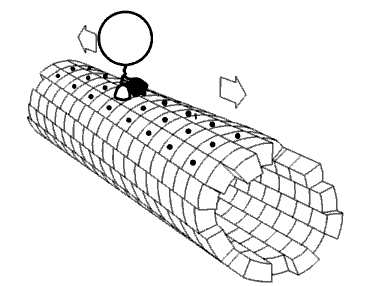
Photo from academic.microsoft.com
Spiropyran (SP) is one of the photochromic molecules that have been extensively studied because of their huge commercial applications. When exposed to the UV light, SP undergoes a molecular arrangement… Click to show full abstract
Spiropyran (SP) is one of the photochromic molecules that have been extensively studied because of their huge commercial applications. When exposed to the UV light, SP undergoes a molecular arrangement to generate an open-form merocyanine (MC), which can revert to the closed-form photochemically or thermally. A sequential mechanism of the photoisomerisation involved in the photochromic process still remains controversial. The current work aimed at providing a detailed and comprehensive picture of the ring-opening process of the spiropyran by the combination of the CASPT2/CASSCF static electronic structure calculations and on-the-fly surface hopping dynamic simulations. Four different reaction pathways were observed in our results. The internal conversion process (IC) driven by C–O bond rapture can generate both the ring-opening and closed products on the S0 state, while generating only closed forms when driven by a hydrogen-out-of-plane (HOOP) mode. In addition, the ring-opening process of the spiropyran can also occur on the excited state. The C–N bond dissociation was not observed in our simulations results. The current investigation shed light on the complex mechanism of the SP-MC ring-opening process, which would provide helpful information for further design or improvement of SP-MC-based photochromic devices. GRAPHICAL ABSTRACT
Journal Title: Molecular Physics
Year Published: 2020
Link to full text (if available)
Share on Social Media: Sign Up to like & get
recommendations!